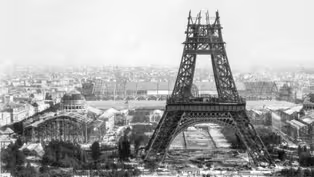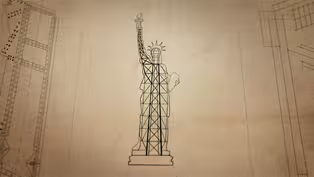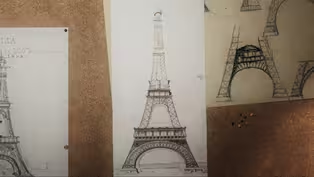
The Mysterious Illness That Befell Eiffel Tower Construction Workers
Clip: Season 51 Episode 3 | 2m 50sVideo has Closed Captions
Building the massive Eiffel tower on the bank of the Seine River posed more than one challenge.
In 1887, the men working on the Eiffel Tower reported bleeding, difficulty breathing, and partial paralysis after being in pressurized air chambers. Today, we know this illness as the bends.
Problems playing video? | Closed Captioning Feedback
Problems playing video? | Closed Captioning Feedback
National Corporate funding for NOVA is provided by Carlisle Companies. Major funding for NOVA is provided by the NOVA Science Trust, the Corporation for Public Broadcasting, and PBS viewers.

The Mysterious Illness That Befell Eiffel Tower Construction Workers
Clip: Season 51 Episode 3 | 2m 50sVideo has Closed Captions
In 1887, the men working on the Eiffel Tower reported bleeding, difficulty breathing, and partial paralysis after being in pressurized air chambers. Today, we know this illness as the bends.
Problems playing video? | Closed Captioning Feedback
How to Watch NOVA
NOVA is available to stream on pbs.org and the free PBS App, available on iPhone, Apple TV, Android TV, Android smartphones, Amazon Fire TV, Amazon Fire Tablet, Roku, Samsung Smart TV, and Vizio.
Buy Now

NOVA Labs
NOVA Labs is a free digital platform that engages teens and lifelong learners in games and interactives that foster authentic scientific exploration. Participants take part in real-world investigations by visualizing, analyzing, and playing with the same data that scientists use.Providing Support for PBS.org
Learn Moreabout PBS online sponsorship- [Narrator] After months of preparation, the tower's construction can finally begin.
But being so close to the river means the soil is soaked with water.
How to build the foundation for the world's tallest building on such potentially unstable terrain?
In the middle of the Paris winter, the work begins.
Soon, around 500 workers gather to dig the foundation of the tower's north and west pillars, the nearest to the Seine.
Piece by piece, just like in Bordeaux, large watertight metal boxes are assembled, which will form the pressurized chambers, or caissons, to allow construction of the foundation to be protected from flooding.
Then the project encounters a serious problem.
- When the pressurized air chambers come into use, workers develop an unknown illness.
They report tingling sensations, bleeding, difficulty breathing, and partial paralysis.
No one understands the cause of this ailment nor the importance of making decompression stops when coming back to the surface.
(gentle suspenseful music) - [Narrator] Today, the illness is known as the bends or Caisson disease.
Inside the caisson, much like underwater divers, workers breathe air at a high pressure.
(gentle suspenseful music) But if they return to the surface too quickly and the pressure drops rapidly as a result, nitrogen bubbles can form in their blood, causing decompression sickness.
(gentle suspenseful music) Nobody understands what is happening, even the government is concerned about the potential danger.
- In April 1887, the Minister of Commerce and Industry decides to go down himself into the foundations, and he comes back up alive.
- It was a demonstration that the caisson was not so harmful and it was not a problem, which could delay the construction of the tower.
(suspenseful music) - [Narrator] Despite the discomfort, work resumes until the piers are in place.
Soon, solid masonry rises from the foundations to support the metal structures at the bottom of the tower.
Now they can begin the iron work.
(iron clanking) (suspenseful music)
5 things to know about the Eiffel Tower
Video has Closed Captions
Clip: S51 Ep3 | 1m 40s | Did you know that the Eiffel Tower was once red? (1m 40s)
Building the Eiffel Tower Preview
Video has Closed Captions
Preview: S51 Ep3 | 30s | Explore the engineering behind Paris’s iconic landmark, the tallest structure of its time. (30s)
Inside the Construction of the Statue of Liberty
Video has Closed Captions
Clip: S51 Ep3 | 2m 59s | The Statue of Liberty was one of the most innovative engineering feats of it’s time. (2m 59s)
Why is the Eiffel Tower Shaped Like That?
Video has Closed Captions
Clip: S51 Ep3 | 1m 58s | The Eiffel Tower was a completely novel design at the time it was built. (1m 58s)
Providing Support for PBS.org
Learn Moreabout PBS online sponsorshipSupport for PBS provided by:
National Corporate funding for NOVA is provided by Carlisle Companies. Major funding for NOVA is provided by the NOVA Science Trust, the Corporation for Public Broadcasting, and PBS viewers.
















